We have compiled this list of Italian pastas not for connoisseurs of national cuisine with its indispensable pasta, but for those who are not too familiar with its types yet. After all, when buying it, you need to know not only how much it is cooked, but also for what dish it is intended, with what sauce it is better to cook and serve it.
In order not to create confusion, we place the Italian name next to the name of the pasta in Russian.
We do not pretend to be a complete list - the number of pastes has already exceeded three hundred. We talk about those that are the most popular and are usually on our shelves. So - look in the list for what interests you.
Alphabet - Alphabet - (alphabet)
Buy this paste for your children - those who study in primary school, it is interesting to recognize familiar letters, and it even helps the younger ones to remember them. It is also prepared for a side dish, boiled in soup. Anellini - Wikiwand Anellini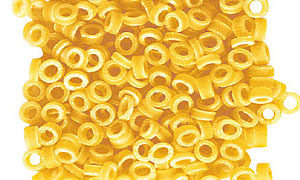

Anellini refers to small pasta, its rings are suitable for salads and soups. Agnolotti - Wikiwand Agnolotti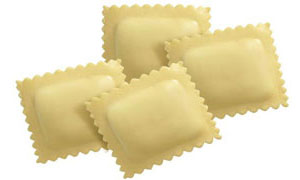

Small ones - like small dumplings of various shapes, the filling for which is also chopped meat, and, for example, spinach, and the famous ricotta. Sauces are selected according to the filling. Acini di pepe - Wikiwand Acini di pepe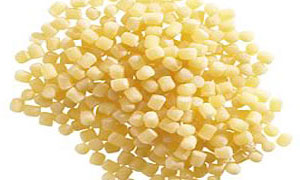
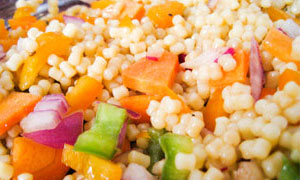
Another paste that is used in salads and soups is very small, for which it got its name “pepper seeds”. Bucatini - Wikiwand Bucatini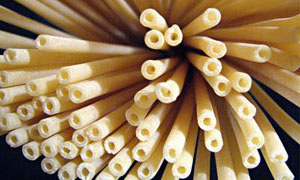
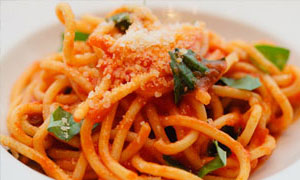
Pasta got its name from bucato - full of holes. And all because, although the paste is very long and sufficiently thin (about 2.5 mm), it is hollow inside. It goes well with tomato sauces, as well as cheese and vegetable ones. But the classic is bucatini with Amatriciana sauce. Vermicelli - Vermicelli![]()
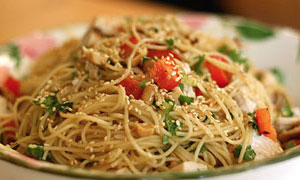
"Worms" is what it means in the original language. Adapted to Russian - the well-known vermicelli. There is something in common with spaghetti, but vermicelli is both shorter and thinner. Suitable for vegetable salads, but then for cooking it is broken into small pieces. Sauces are preferably light. Gemelli - Wikiwand Gemelli
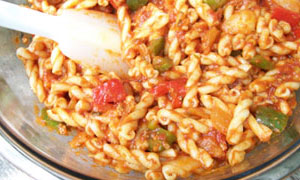
Gemelli means twins. Because two identical thin flagella from the dough are twisted into one. Good with any sauce - meat, fish, vegetable, creamy. Ditalini - Ditalini

Imagine pasta that has been chopped into short tubes - this is how ditalini look, and really look like thimbles - this is how their name is translated.
Ditalini is boiled and used in salads, added to thick soups and stews - vegetable, often bean. Ziti - Ziti

Small tubules, slightly bent, with a wide channel inside, which is why thick sauces are usually prepared for them. Ziti is suitable for salads and casseroles. Cavatappi - Cavatappi (corkscrew)

These spirals are often introduced into salads because of their picturesqueness. As an independent dish, they are accompanied by both simple and complex sauces. Campanelle - Wikiwand Campanelle

Either bells, or maybe flowers .. but beautiful. Dense sauces are prepared for them, with cheese or meat. They make a great addition to salads and soups. Cannelloni - Wikiwand Cannelloni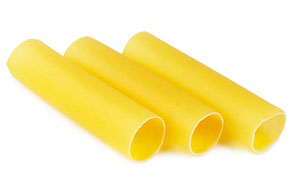
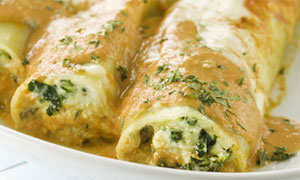
Large tubes with a large opening, which are convenient to stuff. Filled with meat, vegetables, cheese. The cannelloni are filled with stuffing, poured with a generous portion of Bechamel or tomato sauce and baked in the oven. Cappelletti - Wikiwand Cappelletti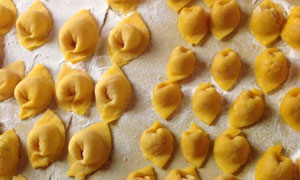
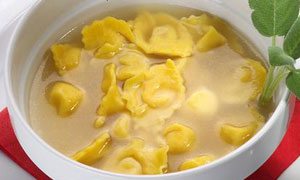
These - in translation - "little hats" - are produced both with fillings and without them. They are boiled in broth, after which they can be served with a sauce of your choice or - in the easiest way - sprinkled with grated cheese. Capellini - Wikiwand Capellini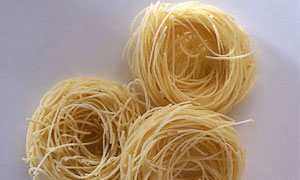
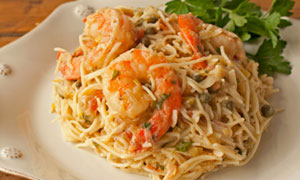
Capellino - hair. It is round in cross section, long-long and very thin paste - less than 1 mm. Sauces she requires tender and light. An even thinner paste is called "capelli d'angelo", that is, "angels' hair." Conchigli - Conchiglie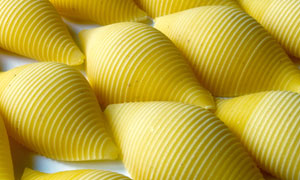
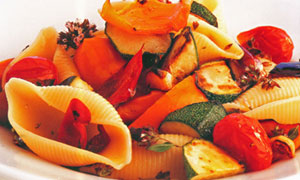
Mollusk shells in translation. They have long been known to us as "shells". The shape allows conchigli to keep even very thick sauce in their cavities. Salads are prepared with them, they are often baked. Conchiglioni - Wikiwand Conchiglioni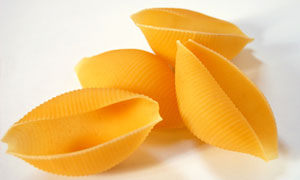
![]()
Larger shells. They are good in salads, and baked - stuffed - with sauce. Lasagne - Lasagne or lasagna

Lasagna sheets look like bread, flat plates, thin, they are good to bake with different fillings. It is very popular at home, as well as in other countries. Toppings range from meat to seafood, plus sauce, usually bolognese or bechamel. Wikiwand Lanterne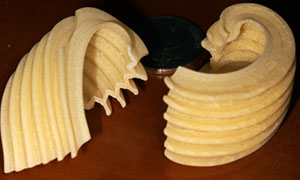

The pasta is medium-sized, but twisted-twisted and the ribs on the surface just call for a thick sauce. Lanterne looks spectacular in a salad. Linguine - Wikiwand Linguine (linguini)
![]()
Ligvini - "tongues" - longer than spaghetti, flat in shape, good with thick sauces, usually based on tomatoes or fish. The best choice of linguine sauce is marinara, pesto,. Macaroni - Maccheroni
![]()
Thick tubes with wide holes, thin sauce easily penetrates into them, impregnating the pasta and giving it a wonderful taste. Manicotti - Wikiwand Manicotti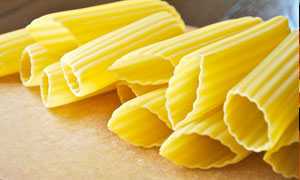
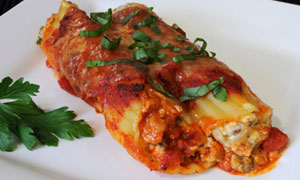
Large short tubes, the surface is often corrugated. They are usually boiled a little, stuffed and baked with sauce. Gnocchi - Gnocchi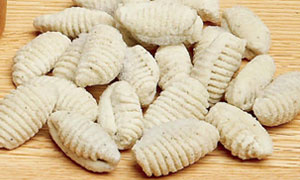

These are dumplings, which are served as the first course in the homeland. The dough for them can include semolina, cheeses, spinach, potatoes, there are even dumplings of their crumbs. The classic serving of gnocchi is tomato sauce, cheese, butter, previously melted. Smaller dumplings are called "gnocchetti". Orecchiette - Wikiwand Orecchiette

These "ears" (in translation) are indeed similar in shape to small - less than 20 mm - ears.
They cook a lot with them. different dishes, boiled in soups and for salads. Orzo - Wikiwand Orzo

At first, orzo can be mistaken for rice - the shape and size are almost the same. One of the few types of pasta that is cooked as a side dish. Good also in soups and salads. Pappardelle - Wikiwand Pappardelle

Curiously, "pappare" means "to devour". Pappardelle are rolled long noodles that are wider than fettuccine noodles. Good with rich, thick sauces, as well as baked. Pasta color - Pasta colorata

This designation is not one paste, but all those that are produced in color. Moreover, dyes are only natural, mainly vegetable juices. For the method of preparation, in fact, it is not the color of the paste that is important, but what shape it is. Pastina - Pastina
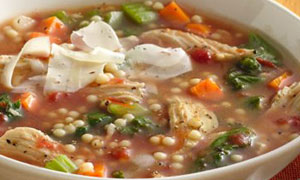
Indeed, beads (this is how the translation sounds in Russian) are perhaps the smallest of the pastes. Like other small ones, pastina is best suited for salads and soups. Penne - Penne

Penna is a feather in translation, and, of course, the name is given to it because of the similarity of its shape with a writing pen. Quite large tubes up to 40 mm and up to 10 mm wide, which are conveniently cooked, seasoned with delicious hot sauce or made into a salad ingredient, or even casseroles. In our country - as in many countries - it is among our favorite pastas. Peciutelli - Perciatelli

Another kind of long pasta, which at first glance can be mistaken for spaghetti, but it is thicker and just as hollow inside. Therefore, the same cooking methods are usually used for them. Perfectly harmonizes with any meat sauce. Ravioli - Ravioli
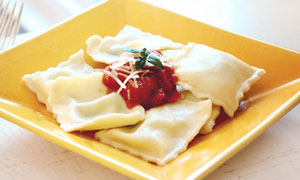
An analogue of our dumplings, with the differences that the filling for them is ready-made, and not raw, like our meat, and they are also dessert, that is, sweet. The shape of the ravioli can be different, but usually - with a figuratively cut edge. They can be boiled, baked, fried. The sauce is preferably uncomplicated, tomato, and almost certainly basil. Radiatori - Radiatori (Radiators)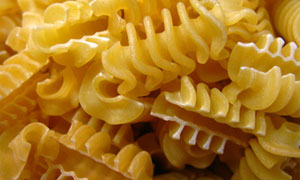
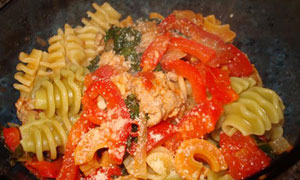
The shape helps the pasta hold the thick sauce and is usually cooked with creamy sauces. It is also often baked, put in salads, which it decorates, as well as soups. Rigatoni - Rigatoni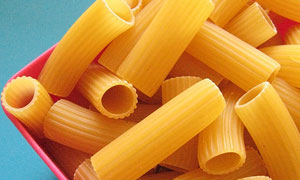

Corrugated, thick short tubes of rigatoni with spacious holes by their very shape are designed to be served with a thick sauce, they are convenient to bake and use in salads. Rotelli - Wikiwand Rotelli (Ruote)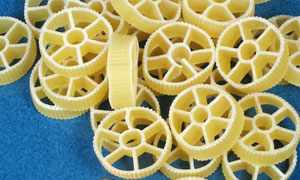

Rotelli - that is, the wheels. They need dense sauces - fish, meat, vegetable. The wheels look great in any salad, suitable for goulash and soups. Rotini - Wikiwand Rotini
![]()
Real springs. Once upon a time, Italian housewives made them by wrapping a thin rope of dough around a knitting needle. Rotini look great in a salad, and the sauce for pasta is always very thick, in which there are meat and vegetables in tangible pieces. Rocchetti - Wikiwand Rocchetti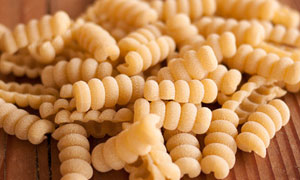
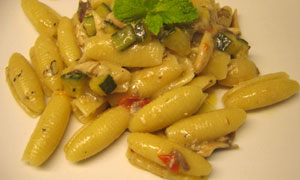
In translation - coils. They are short, used in stews and salads, thick sauces are needed for it. Spaghetti - Spaghetti

Spaghetto in Italian - thin twine, rope, so the name is right on point. Why exactly this pasta has become the most, perhaps, famous and often bought is a mystery. Served with any of the many tomato sauces, you can also cook casseroles with it. No pasta can be compared with the number of recipes with it. Stellini - Wikiwand Stelliny

Small stars, good in light soups, as well as in salads. Name Tagliatelle

Pasta tape differs from fettuccine similar to it in a smaller width. It has a very porous structure, which requires
Pasta(more often just pasta) - long, fiber-like dough products (usually made from wheat flour with water). Rice flour, buckwheat flour, mung bean starch, and other foodstuffs are also sometimes used. Usually pasta is stored dry and boiled before consumption. Sometimes other ingredients are added to the dough, for example: dyes (tomato paste, spinach, cuttlefish ink and others), eggs.
Often the term "pasta" refers only to dried dough products. However, some dough products that are boiled are prepared not only from dry, but also from freshly prepared dough (for example: noodles, gnocchi, beshbarmak). There is no exact, unambiguous and generally accepted classification of dough products. In Italian pasta and some other flour products called paste(Italian Pasta), apparently from late. lat. pasta "dough" (possibly derived from Greek παστη " flour sauce”) is a homogeneous mushy mass, but in Russian this word has a different meaning.
In the kitchen Slavic peoples there are several flour dishes reminiscent of the Italian "dough": noodles, lazanki, dumplings, straps, dumplings.
Classification of pasta
The raw material used affects, in accordance with Russian standards, the division pasta into groups A, B, C (depending on the type of wheat) and on the highest, first and second grades (depending on the type of flour):
- group A: made from durum wheat flour (durum) of the highest, first and second grades.
- group B: made from flour of soft vitreous wheat of the highest and first grades.
- group B: made from wheat flour of the highest and first grades.
Durum wheat varieties have a higher gluten content and a lower starch content than soft wheat. Pasta made from them has a lower glycemic index.
In some countries (for example, in Italy), pasta is allowed to be made only from durum wheat (similar to group A in Russia).
By cooking method Distinguish between fresh, usually egg, and dry products.
By degree of readiness pasta can vary depending on its type and local traditions. In Italy, the standard is cooking to the degree of al dente (“on the tooth”, that is, the very middle of the product remains slightly undercooked and hard. In some countries, including Russia, products prepared in this way may seem half-baked).
A large and perhaps the most common group of pasta is whole (spaghetti) or tubular (pasta) products, at least 15 cm long, with a very small, usually 1-2 mm, diameter of the product (or its wall thickness, if tubular) .
IN Italy Various types pasta products are named according to their shape and size.
The ending in the name indicates the size of the product:
- oni - large
- ette or etti - small
- ini are small.
According to the form, pasta is divided into five groups:
- long pasta
- short pasta
- pasta for baking
- Filled dough th
long pasta
- Bavette(ital. Bavette) - similar to flattened spaghetti - originally from Liguria.
- capellini(Italian Capellini; from Italian capello - hair) - the name comes from the north of Central Italy, translated from Italian as "hair", "thin hair" (1.2 mm - 1.4 mm). It is also sometimes called: "Angel's hair" (Capelli d'angelo) or "Hair of Venus" (Capelvenere).
- Vermicelli(Italian ‘Vermicelli; from Italian verme - worm) - long, rounded and rather thin (1.4 mm - 1.8 mm).
- Spaghetti(Italian Spaghetti; from Italian spaghe - string) - long, rounded and rather thin (1.8 mm - 2.0 mm). They were originally 50 cm long. Now, for convenience, this has been reduced to about 25 cm, but you can also find long spaghetti (Manufacturers usually put them in the “special format” section).
- Spaghettini- thinner than spaghetti.
- spaghettoni- thicker than spaghetti.
- Maccheroncini(ital. Maccheroncini) - are somewhere between spaghetti and bavette.
- Bucatini(Italian Bucatini).
- Tagliatelle(Italian Tagliatelle) - thin and flat strips of egg dough about 5 mm wide. Differing from fettuccine, mainly only in a smaller width (the difference is at least 2 mm).
- Fettuccine(Italian Fettuccine) - thin flat strips of dough about 7 mm wide.
- Mafaldin(Italian Mafaldine) - a long ribbon with wavy edges. Mafaldine were invented in Naples and were once called "Rich Fettuccine". The Neapolitans invented them specifically for Princess Mafalda of Savoy and subsequently dubbed them "Reginette" (Reginette - princess, literally translated) or "Mafaldina" in her honor.
- Linguine(Italian Linguine) - long, thin strips of noodles.
- Pappardelle(Italian: Pappardelle) - 13 mm wide flat noodle ribbons, originally from Tuscany.

short pasta
- Fusilli- fusilli - originally from northern Italy. The name comes from the word "fuso", from the Italian "spindle", with which wool was spun. The shape of the Fusilli resembles three blades fastened together and twisted in a spiral.
- Girandole- Girandole - are considered the younger sisters of Fusilli. Girandole got its name for its resemblance to a children's toy - a multi-colored spinner. They are shorter and take less time to cook.
- Penne- penne - Rigate (ribbed), Lisce (smooth), Piccole (small) - all Penne have a characteristic dynamic shape of a hollow tube with oblique cuts, in the manner of a sharpened old pen, in comparison with the usual straight classic pasta.
- pipe rigate- pipe rigate. Some believe that this format of pasta belongs to the Roman gastronomic culture, while others suggest that it first appeared in north-central Italy. People call them snails. They resemble tubules in shape, twisted in a semicircle so that the sauce is kept inside. Due to their shape, Pipe Rigates go well with a wide variety of sauces, which are perfectly retained on the ribbed surface and inside, in order to reveal the taste of all ingredients directly on contact with the palate. That is why Pipe Rigate is successfully used in combination with even the lightest sauces. Brilliant protagonists of almost all culinary experiments, Pipe Rigate goes well with simple yet flavorful sauces. A particularly delicious result is obtained by combining Pipe Rigate with sauces made from vegetables or cheeses, which, falling inside the curved shape, will allow you to slowly enjoy their taste. They also go well with thick, flavorful sauces, such as mushroom, sausage, and hot red pepper sauces.
- Tortiglioni- tortiglioni - one of the first forms of pasta invented in Naples - short tubules with a characteristic pattern, from which they got their name - "tortiglione" - spiraling grooves that remain after processing on a lathe.
- Maccheroni- maccheroni - small thin tubes, slightly bent.
- Cellentani- cellentani - spiral tubes.

pasta for baking
- cannelloni- cannelloni - tubules up to 30 mm in diameter and up to 100 mm long, one of the first types of pasta invented by people. Since ancient times, they were made from dough mixed with water from ground grain and salt, then the dough was rolled out and cut into rectangles, on which the filling was placed, rolled up and then boiled.
- Lasagne- lasagna - Rectangular baking sheets. Lasagna sheets are alternated with the filling and baked in the oven for 20 minutes. Unlike other types of dough, it does not need to be pre-boiled.
- Anelli- anelli - miniature rings for soups.
- Stelline- stelline - asterisks.
- Orecchiete- small items in the form of ears.
- filini- thin short threads.
- « letters».

- Farfalle- farfalle - butterflies.
- Farfallette or Farfallini- smaller butterflies.
- Conchiglie- conchile - products in the form of shells; suitable for filling. There are smooth (lische) and corrugated (rigate).
- conciliette- smaller shells.
- Conchiglioni- conchiglioni (large shells).
- Gemelli- thin spirals or bundles with hollow ends.
- Caserecce- horns.
- Campanelle- bells with a wavy edge.
- Gnocchi or cavatelli- corrugated shells.
- Ravioli- an analogue of Russian dumplings, Ukrainian dumplings, etc.
- Agnolotti- rectangular and crescent-shaped envelopes with traditional meat filling
- capeletti- small stuffed products in the shape of a hat.
- Tortellini- an analogue of dumplings, only with a peculiar filling, for example, with cheese, with ham and cheese, even with ricotta and spinach.
- Cannelloni- large tubes designed for filling with minced meat.
Pasta is common all over the world and is the basis of many dishes. Widely used, among others, in Italian, East Asian and vegetarian cuisine.
Nutritional and energy value
In accordance with Russian standards, 100 g of pasta (not cooked) should contain from 10.4 to 12.3 (in soy - 14.3) g of protein, from 1.1 to 2.1 (in dairy - 2, 9) g of fat, from 64.5 to 71.5 g of carbohydrates. Energy value- from 327 to 351 kcal.
In Italy, a plate of pasta (85 g is a portion per person) should contain approximately:
In a bowl of pasta: Daily Value:
Kilocalories 297 2000
Proteins 10.2g 75g
Fats 1.3g 67g
Saturated fats 0.3g 22g
Carbs 61.4g 275g
Sugar 0.9g 30g
Dietary fiber 2.5g 30g
Sodium 2mg 2.4mg
pasta dishes
pasta
Naval pasta
Lasagna with bacon, spinach and mushrooms
Spaghetti with asparagus and ham
Tuscan Cannelloni
Mediterranean pasta with basil
Meat lasagna with eggplant
Tagliatelle with smoked salmon
Spaghetti with bolognese sauce
Pasta with cheese and zucchini sauce with garlic flavor
Pasta baked with mozzarella
Penne Salad with Dried Tomatoes
Pasta - tagliatelle with mushrooms
Pasta with broccoli and asparagus
Pasta with summer vegetables and herbs
Salad with noodles, shrimps and ginger
Pasta with lemon, basil and ricotta
Spaghetti with olive and caper sauce
Spaghetti with shrimps
Pasta with broccoli in creamy cheese sauce
Fusilli with herbs and tomatoes
Ramen.
A source of information:
Wikipedia - http://ru.wikipedia.org/
Pasta- article from the Great Soviet Encyclopedia.
Probably, the first inventors of pasta did not even imagine how far their creation would go and how popular it would become all over the world. Today, pasta has not been tried except by the natives, who do not communicate with the outside world at all. Dry flour products made from flour of different varieties and according to different recipes, depending on the composition of the feedstock, the form of manufacture and even possible fillings, pasta today are divided by specialists and gourmets into several hundred varieties. Some types of pasta are known only to a very narrow circle of cooks, others are popular all over the world, and the most famous and commonly used of them should be listed.
What are pasta
In fact, pasta is wheat dough, dried and shaped into a certain shape. It is depending on the form that the following types of pasta are distinguished:
Spaghetti(it. Spaghetti - “small ropes”).
Perhaps the most popular all over the world variety of pasta. Spaghetti have an average thickness of up to 2 mm and a length of 25 cm. Previously, 50 cm spaghetti were considered standard spaghetti, but now this pasta length is considered excessive, and half a meter spaghetti is sold only in packages labeled "Special Format". They are consumed hot on their own or as part of stews with the addition of, and sauces.
Vermicelli(it. Vermicelli - “little worms”).
They differ from spaghetti only in a smaller thickness - from 1.4 mm to 1.8 mm. They are used like spaghetti, but sometimes they can be part of cold dishes.
capellini(it. Capellini - “hairs”).
The thinnest of round types pasta. Their diameter is usually 1.2 - 1.4 mm. This type of pasta is also called angel hair and is consumed only hot in sauces, broths and stews.
Linguini(it. Linguine - “little tongues”).
Similar to regular spaghetti, only flattened.
Fettucine.
A very popular type of flat pasta up to 7 mm wide, usually sold in the form of bundles of such strips. Served in broth or on their own, but only hot.
Lasagna.
Very wide dough strips. Sometimes their width equals their length, and the pasta becomes like square pancakes. At the request of the manufacturer, they can have smooth or carved edges. Served as a pie or a kind of closed pizza with toppings only hot.
Spirals and fusilli.
Curled pasta, served hot or cold. The difference in these species is only in length - fusilli are longer and have more variations in thickness.
Papardelle or egg noodles.
Very wide flat strips, sold fresh or dried. Considered a traditional Tuscan dish and served hot with various vegetables.
Tagliatelle.
Similar to linguine, but only twisted into balls. They are used to prepare Emilia Romagna.
Horns
Famous in the post-Soviet space. With cheese and vegetables, they are served as part of both hot and cold dishes. Reduced copy of the horns - Ditallini.
Tubes.
They have different names depending on the size and presence of grooves - Rigatonni, Capelloni, Penne, Manicotti. These varieties of pasta are served hot with various fillings. Large tubes are stuffed, filling them with stuffing from the inside.
Shells.
They are called Conciglie or Conciglioni. Very decorative and used for making hot garnishes.
Ravioli.
Small slices of dough containing a specific filling. This type of pasta resembles dumplings or small dumplings. They are definitely served hot.
Additionally available different kinds and varieties of pasta in the form of cart wheels, grains of cereal crops, letters of the alphabet, bows and dumplings. Here the variety is limited only by the imagination of the manufacturer. And in the homeland of pasta - in Italy, and in other countries of the world, multi-colored pasta is actively produced - green, brown, red. The color in them is created by adding spices, flour of a different grade, and only for some manufacturers - due to the dye.
Their properties may also depend on the shape of pasta: small and thin pasta is more fully digested, and thick and made from wholemeal flour contain more substances that were present in itself.
But more often pasta is chosen not for their nutritional value and usefulness, but for the attractiveness of the form and personal taste preferences. IN Food Industry there is a classification of pasta by grades depending on the type of flour, and by groups.
Varieties of pasta
Distinguish:
- group A pasta. They are made from hard grain flour (durum wheat usually acts as a raw material).
- group B pasta. Made from vitreous wheat of the first and highest grades;
- group B pasta. Made from simple baking flour of the first and highest grades.
In addition, sometimes for complete characteristics pasta product indicate the presence of eggs in it and the degree of readiness. For example, the famous Mivina noodles are cooked in a few minutes, and some traditional horns require a minimum of 20 minutes of cooking.
It is not surprising that the shelves with pasta in supermarkets today are literally littered with products, among which it is difficult to find two identical varieties. And this is good for the consumer: having a huge choice, the buyer can choose exactly the type of pasta that suits him best.
Pasta is usually made from dough kneaded with wheat flour and water. However, sometimes in their preparation it is used rice flour, buckwheat or starch. Usually, pasta is called dried products, which subsequently require cooking. Who first came up with the idea to dry the dough, thus preserving it for a long time, is not exactly known. Various versions lead to Egypt, Greece, China, and some sources refer to Etruscan times, but the facts testifying in their favor are not very convincing.
In order to classify varieties of pasta, there are standards in Russia. In accordance with them, based on the varieties of flour and wheat, pasta is divided into groups (A, B, C) and varieties (highest, first, second). Moreover, for group A, durum is used - durum wheat, and for the rest - soft. Such pasta has a lower glycemic index. For some countries, in particular for Italy and, accordingly, Italian pasta, the use of only durum wheat is typical.
Pasta can be divided into tubular (actual pasta) and whole (spaghetti, fettuccine). Depending on the cooking method, dry products and fresh products (gnocchi, noodles and pasta at home) can be distinguished. Many shapes and sizes of pasta can be divided into five volume groups. These are long products, short, curly (shells, bows, horns), small (mainly for soups, for example, vermicelli) and pasta intended for baking. 
"Family" of long pasta
The most famous long pasta is spaghetti. Their average length is 25 cm, although initially they reached half a meter, and a thickness of about 2 mm (thinner spaghettini, thicker spaghettoni). Naples (Italy) is considered their homeland, and in the city of Pontedassio there is a museum dedicated to these “twine pieces”, with which Antonio Viviani compared them when he gave them the name spaghetti. Interestingly, a special fork was invented for this type of pasta in 1700.
Long, thin, rounded pasta is called capellini (Kapellini). There are also more poetic names - "Hair of Venus" or "Hair of an Angel." Another type of thin pasta is vermicelli. Its name comes from the Italian word "verme", which means "worm", but vermicelli did not immediately receive this name. In the 14th century, in different cities of Italy they were called differently: orati, minutelli, fermentini, pancardelle.
There are several types of pasta that look like thin flat strips that differ in recipe and width. Tagliatelle are about 5mm wide, Fettuccine are about 7mm wide. There are also Linguine, Bucatini, Pappardelle - egg noodles, Bavette and Mafaldine. 
short pasta
Rotini (Rotini) outwardly resemble spaghetti spirals. Longer, but, just like rotini. twisted in spirals - fusilli (Fusille). Cellentani are also spiral tubes. Maccheroni are slightly bent tubes of small size.
Penne pasta (Penne) are both smooth and ribbed. Outwardly, they look like a hollow tube with oblique sections. Pipe rigate (Pipe rigate) are tubules twisted in a semicircle. Their shape allows liquid to be retained inside, so they are used in combination with a wide variety of sauces. 
Cannelloni in Italian means "large reed" and are large long pipes. Pasta dishes sometimes get their names from the type of pasta used in it. For example, manicotti (Manicotti) are similar to cannelloni, but smaller. A dish made from this pasta has an independent name - manicotti. The same can be said about a dish called lasagna, which is based on baking sheets.
For soups, small pasta is used, for example, anelli (Anelli) - rings, stelline (Stelline) - stars, filini (Filini) - short threads. Children's favorite letters are the letters of the alphabet. Sometimes only by preparing a soup with letters, you can "persuade" the child to eat it. 
Pasta with a "figure"
This group of pasta includes all products that have interesting shapes, for which they received beautiful names. Caserecce - pasta-horns, farfalle - butterflies, and farfallini - small butterflies, campanelle - bells.
Shell pasta or conchile are suitable for stuffing. The same shells, but smaller, will be called conchigliette, larger - conchiglione. Corrugated shell pasta is called gnocchi.

Sophia Loren is famous for pasta
Sophia Loren was 72 years old when she ventured nude for a Pirelli calendar, even though she is famous for pasta. However, among Russians, it is still believed that pasta makes them fat. In fact, their benefit or harm depends on how you choose pasta. Here are some rules.
When choosing Russian pasta, you need to make sure that they are made in accordance with GOST and belong to group A. The composition indicated on the package should contain water and flour. What is sold "by weight" is not worth paying attention to. The right pasta can only be found in packages.
Outwardly, the pasta should be smooth, have a moderately golden color. There should be no “flour” and fragments of pasta in the pack. They should bend easily, break with difficulty. When cooking, high-quality pasta is distinguished by the absence of water staining and shape changes. They don't stick.
Pasta is a wonderful product: tasty, inexpensive, easy and quick to prepare. No wonder pasta dishes are so loved by people in all countries. In Japan, long pasta is sure to accompany the New Year, being a symbol of longevity.
We advise you to prepare:
Lose weight easily (result in 25 days)
Why stubborn dieting DOES NOT BRING visible results, but only leads to frustration and depression, and how to still lose weight in order to:
- Return the attention of her husband or find a new man.
- Again feel the envious glances of friends and colleagues.
- Believe in yourself, feel slim and desirable.
- Do not be shy to go to the cinema or to a cafe with your friends.
- Feel free to post photos from vacation or with children on social networks.
Burn fat in targeted areas

